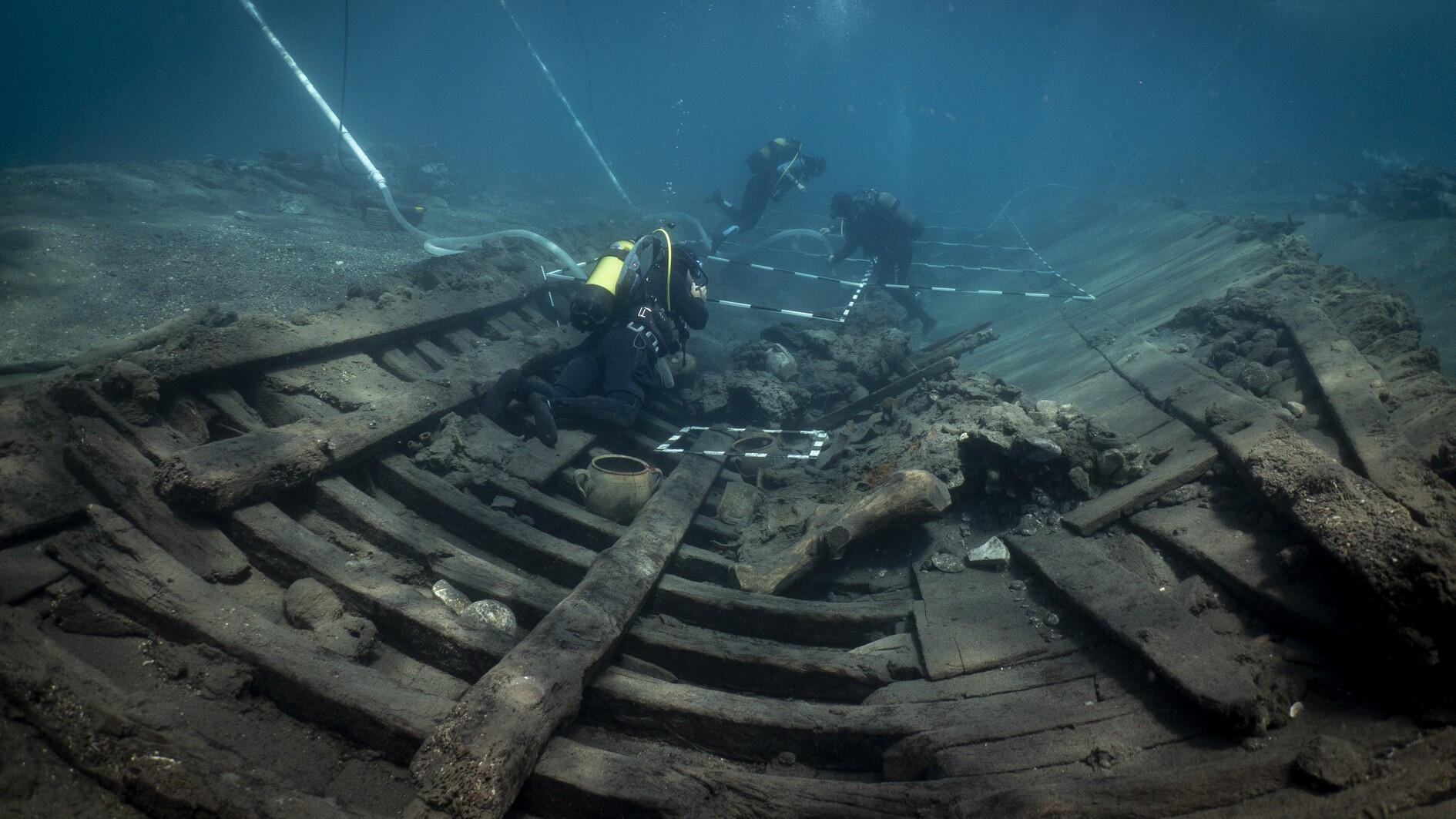
Excavations at the Kızlan Ottoman shipwreck off the coast of Datça have brought to light significant findings that will shed light on Ottoman maritime history.
Conducted under the Culture and Tourism Ministry’s “Heritage for the Future Project,” the underwater excavations are being carried out by Dokuz Eylül University’s Center for Maritime Archaeology and Underwater Cultural Heritage (SUDEMER). The wreck is unique as the only 17th-century Ottoman shipwreck ever excavated in Türkiye.
The excavation work, where Culture and Tourism Minister Mehmet Nuri Ersoy also dived in 2021, is being carried out by a specialized team.
The staff from state-run Anadolu Agency accompanied the excavation team, documenting their challenging underwater work. Beginning their day with a morning briefing, the team reviews previous findings and organizes diving schedules. Divers, working in pairs or groups of four, perform two dives daily, benefiting from the shallow depth of the wreck that allows extended work periods.
The team continues cataloguing on land until late at night after their underwater shifts.
Professor Harun Özdaş, head of the excavation and director of SUDEMER, said that in the fourth excavation season, they determined from a seal that the ship sank between 1667 and 1668.
He explained that although the wreck initially seemed ordinary, the deeper they went, the more extraordinary the discoveries became. “The finds are unusually diverse and abundant for such a shallow wreck site. We are facing a collection so rich it could open a new museum dedicated solely to Ottoman maritime history,” he said.
Özdaş noted that this season’s excavations particularly revealed military equipment. The team uncovered 36 Ottoman rifles, over 50 grenades, swords, daggers and pistols, as well as more than 3,000 bullets.
“These finds prove that the ship was an Ottoman state vessel,” he said, adding that they also recovered a distinctive Ottoman dagger with a curved blade and decorated hilt. The artifact is still covered with sediment, and its details will emerge after conservation work.
Özdaş stated that a seal inscribed with the name “Hüdabende Abdullah Ahmed” allowed precise dating of the wreck. “Last year, we found coins that suggested a date between 1660 and 1675, but this seal gave us the year 1667-1668. It shows the ship ran aground after a conflict, then burned and sank. Besides the weaponry, other remarkable artifacts were recovered: 135 clay pipes produced in Tophane, two chess sets, more than 40 pieces of Chinese porcelain packed in bamboo, copper kitchenware, jugs, cauldrons, wooden spoons, boxwood combs and leather flasks.”
Tracing Ottoman maritime heritage
Özdaş said other Ottoman wrecks have also been documented in the region. “As part of the Blue Heritage Project, we have created a Geographic Information System of Ottoman-era underwater cultural heritage. This includes records of both Ottoman ships and enemy vessels sunk by the Ottomans. In the nearby waters at depths from shallow areas down to 70–100 meters, there are around 20 wrecks dating from the 17th to 19th centuries,” he noted.
Associate Professor Nilhan Kızıldağ, deputy head of the excavation, said the team uses photogrammetry to record the wreck. Hundreds of photographs are taken daily and merged into a composite image, allowing detailed mapping of the site.
“Each artifact recovered is registered. Photogrammetry is our most important method: by creating a mosaic from hundreds of photos, we obtain a detailed single image and carry out planning based on it,” Kızıldağ said.